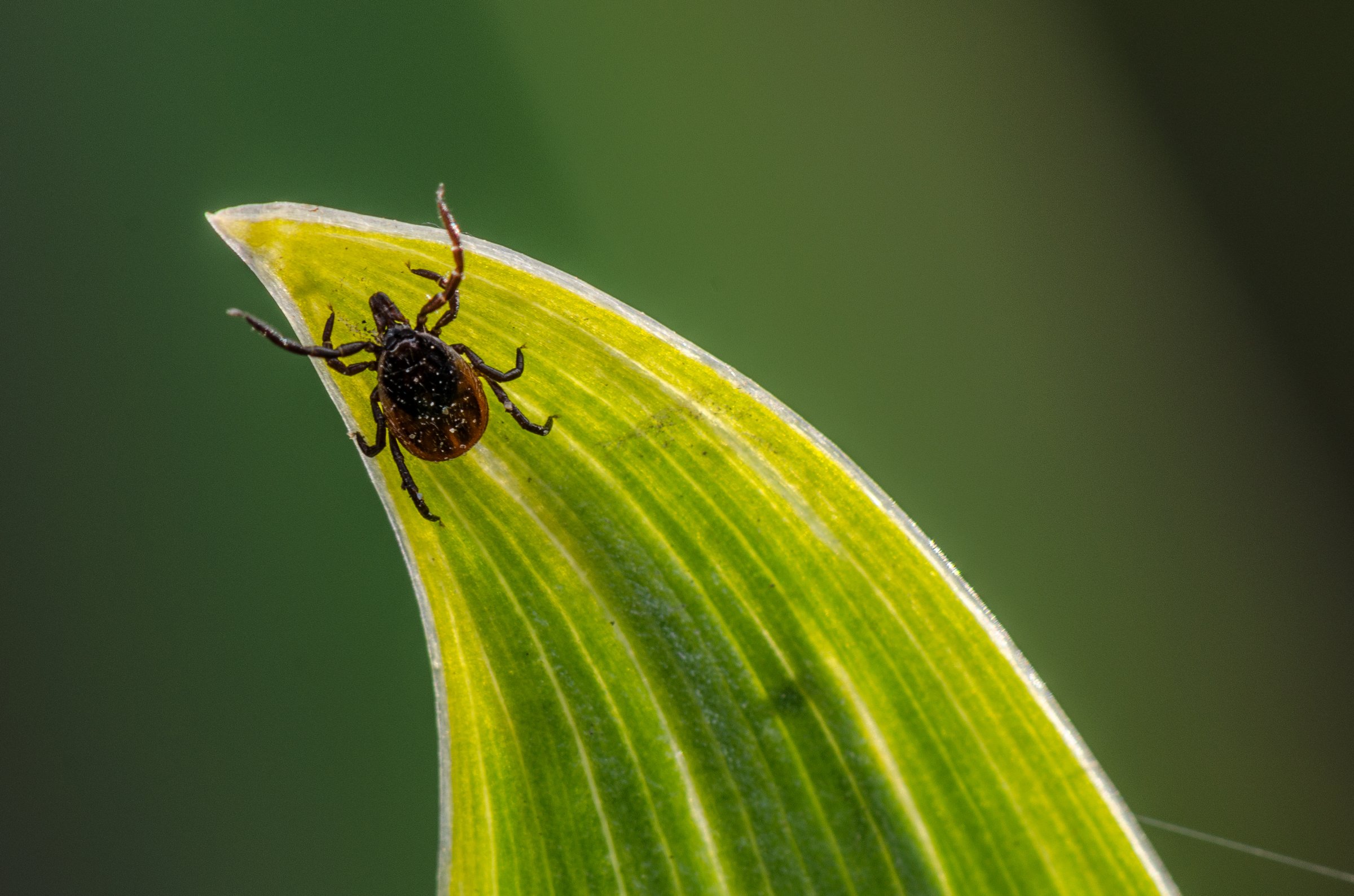
If you’re feeling nervous about going outdoors this summer, you’re not alone: Earlier this month, the Centers for Disease Control and Prevention (CDC) reported that tick-borne diseases have doubled in the United States since 2004. Across the country, cases of Lyme disease have surged in recent years, and reports of new and scary tick-borne illnesses have dominated headlines as well.
Ticks are tiny arachnids, meaning they’re in the same family as spiders, scorpions and mites. They can be identified by their eight legs and their oval- or teardrop-shaped bodies, which plump up after feeding. Their color and markings vary, depending on their specific species, but many appear brown, black, or reddish.
When a tick bites into a human’s or animal’s skin and begins feeding, it can transmit bacteria, viruses or parasites. For some illnesses, like Lyme disease, it takes 24 to 36 hours for the harmful bacterium to be passed to the host; for others, like the much less common (but very dangerous) Powassan virus, transmission may happen in as little as 15 minutes. In rare cases, ticks can even cause paralysis or trigger an allergy to red meat.
That’s why tick removal, as early as possible, is so important. Staying indoors isn’t the answer. But experts agree that people should be vigilant in checking themselves and their pets for ticks and should know what to do if they find one. Health spoke with Jody Gangloff-Kaufmann, an entomologist at Cornell University College of Agriculture and Life Sciences, about how to properly remove a tick. Here’s her step-by-step guide.
What to do
As soon as you discover a tick that’s attached itself to your (or a loved one’s) skin, grab a pair of fine-tipped tweezers ($8; amazon.com), a cotton ball, and some rubbing alcohol, says Gangloff-Kaufmann.
“We say ‘fine-tipped’ because tweezers with flat edges, like the ones used for eyebrows, are not as good,” says Gangloff-Kaufmann. “That flat edge can squish the tick, and if you squash the abdomen, you could actually squeeze germs into your blood.”
Use the tweezers to grasp the tick as close to the skin as possible, and simply pull it straight out with even pressure; don’t yank or twist. Flush the tick down the toilet or seal it in a plastic bag, says Gangloff-Kaufmann. If you remove a tick soon after it attaches, chances are low that you’ll be infected with anything, since it usually takes a few hours for them to begin feeding.
Some people consider testing ticks they have removed—but this isn’t recommended by the CDC. If you’ve been infected, you’d probably notice symptoms before you got any test results back, and even if a tick tests positive for something, that doesn’t necessarily mean you have the disease as well, says Gangloff-Kaufmann.
Treat the bite with rubbing alcohol, and keep an eye on it for several weeks to make sure you don’t develop a bulls-eye rash, which could indicate Lyme disease. Pay attention to your overall health, as well.
“Not everyone gets a rash with Lyme disease, and the other diseases don’t involve rashes at all,” says Gangloff-Kaufmann. (Ehrlichiosis, anaplasmosis and babesiosis can also be transmitted by ticks and are often mistaken for the flu or a common cold.) “If you begin to develop flu-like symptoms at any point, and flu is not going around at that time, you may want to get tested for tick-borne illnesses,” she adds.
If part of the tick stays in your skin after you pull it out with tweezers, try not to worry too much about it. “Treat it with alcohol to make sure it’s sterile, but mouth parts themselves will not cause infection,” says Gangloff-Kaufmann, “and your skin will work them out just like it does a splinter.”
Gangloff-Kaufmann recommends creating a tick-removal kit to keep on hand during tick season. “Ours includes a set of fine-point tweezers, rubbing alcohol, a magnifying glass—because ticks are really tiny, smaller than you’d expect—and a small mirror, for checking hard-to-see places, like behind your ears.” A tick identification card may also be helpful.
What not to do
“There are a lot of old remedies that grandmothers talk about, like using Vaseline or lighting a match or using essential oils,” says Gangloff-Kaufmann. But trying to suffocate or heat up a tick can actually cause it to burrow deeper into the skin. “We don’t recommend any of those things,” she says.
She also doesn’t recommend buying fancy tick-removal tools, at least not for use on humans. “There’s a spoon-like device ($10; amazon.com) that can be good for animals, because their fur can make it difficult to remove ticks with tweezers. But for humans, tweezers are the simplest, best way.”
Don’t assume you’re safe just because you’re not in the forest or deep grass. “Not everyone realizes that a park or a backyard can be a tick habitat,” says Gangloff-Kaufmann. “And if you’re in the woods, it’s usually the edge of the woods where you’ll find the most ticks, not deep in the middle.”
At the same time, she adds, don’t be scared to spend time outside this summer. “I would never advocate for not enjoying the outdoors,” she says. “If you take precautions, like wearing tick repellant and doing a tick check at least once a day, you can still have a great time and you won’t have to worry so much.”
This article originally appeared on Health.com
More Must-Reads from TIME
- Cybersecurity Experts Are Sounding the Alarm on DOGE
- Meet the 2025 Women of the Year
- The Harsh Truth About Disability Inclusion
- Why Do More Young Adults Have Cancer?
- Colman Domingo Leads With Radical Love
- How to Get Better at Doing Things Alone
- Michelle Zauner Stares Down the Darkness
Contact us at letters@time.com